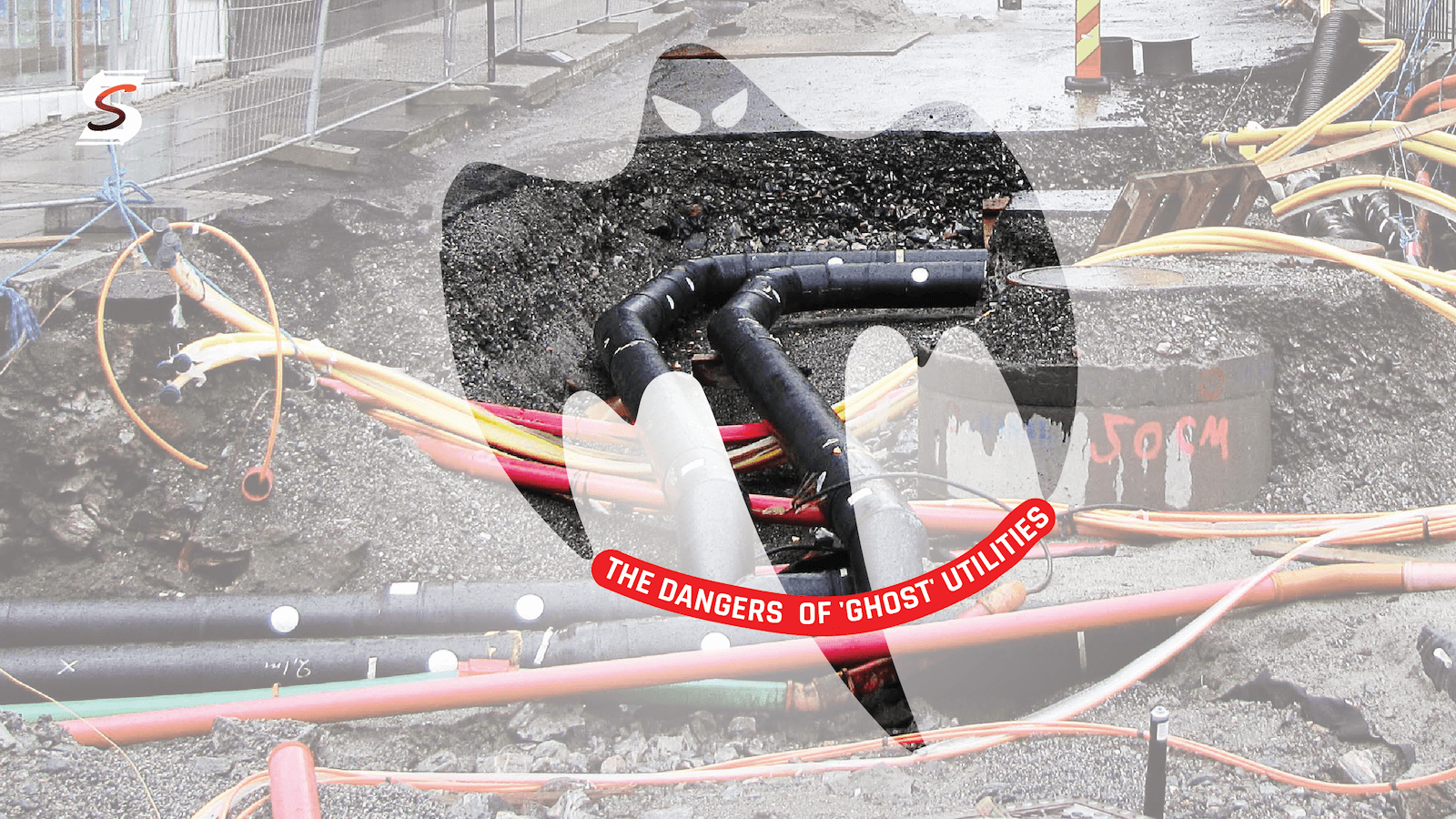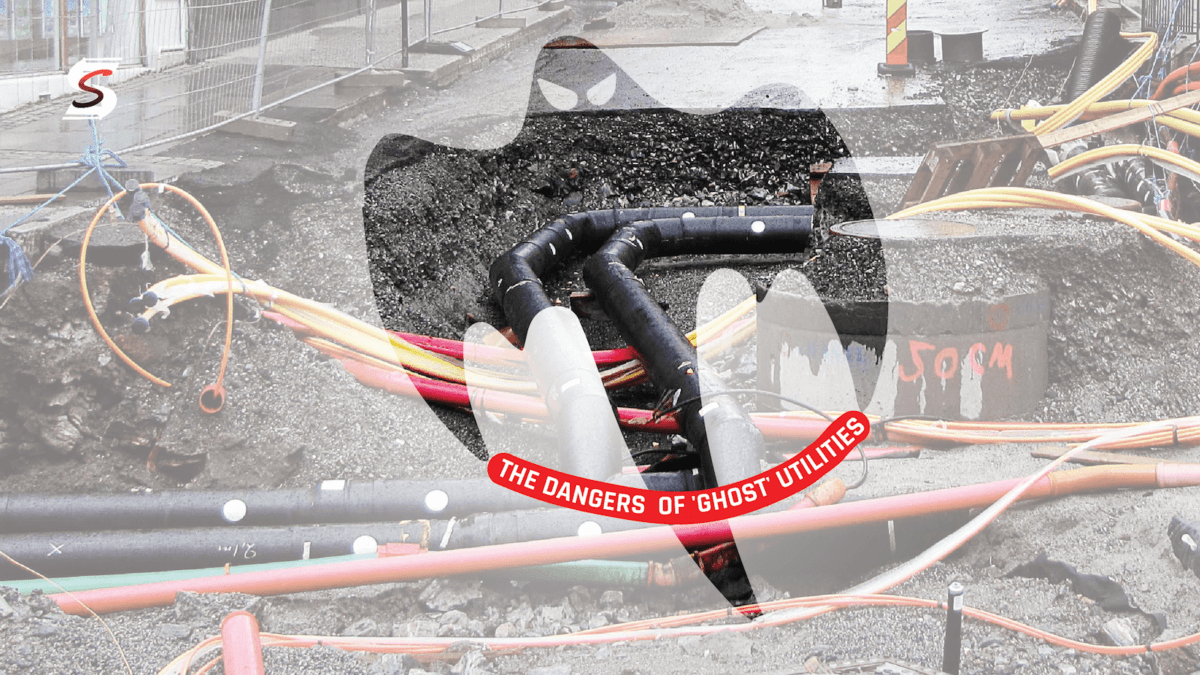
Excavation projects, vital for development and infrastructure, often encounter a lurking menace beneath the surface: 'Ghost' Utilities. These are the elusive, forgotten, or abandoned facilities that pose a substantial threat to safety and efficiency during excavation processes. The 2022 DIRT Report recorded 477 unique damages due to abandoned facilities, which isn’t a lot in view of all the other damages, but these stop work and raise doubts in the excavators mind. By definition, “Abandoned utility facilities means any known underground or submerged utility line or facility that has been permanently taken out of service. For excavation purposes, the abandoned underground utility facilities should always be considered to be active utility service.”
Ghost utilities are the remnants of abandoned or forgotten lines, often omitted from official records or inaccurately marked. These buried relics include old gas lines, decommissioned electrical cables, or even obsolete water mains. Locating these 'phantom' lines becomes a daunting task, leading to significant complications during excavation. One of the excavator comments the 2022 DIRT Report highlighted was, “Abandoned service was spotted, working facility was not at a deeper depth.”
Risks and Complications
-
ROW: Usable available underground space is reduced.
-
Repair of adjacent facilities is hindered and slowed down.
-
Contamination of soil if the line is not properly purged and cleaned upon abandonment.
-
Confusion when attempting to locate active lines.
-
Excavation downtime due to the unknown status of the exposed line.
The dangers associated with ghost utilities are manifold. Their presence, undetected or inaccurately marked, raises the risk of accidental damage, leading to hazardous situations, service disruptions, and even life-threatening incidents. Moreover, these lines might no longer adhere to modern safety standards, amplifying the risks.
Poor Documentation, Big Consequences
One of the key challenges is the lack of accurate documentation or records pertaining to these ghost utilities. Changes in ownership, incomplete historical data, or inadequate documentation processes contribute to this predicament. As a result, excavation teams often rely on incomplete or outdated information, increasing the likelihood of errors. The CGA Best Practice states, “When the presence of an abandoned facility within an excavation site is known, an attempt is made to locate and mark the abandoned facility. When located or exposed, all abandoned facilities are treated as live facilities. Information regarding the presence or location of an abandoned facility may not be available because of updating or deletion of records. In addition, abandonment of an existing facility, damage to an abandoned facility, or limited or non-existing access points may render an abandoned line non-locatable. It should be emphasized that recommendation of this practice is not an endorsement of the maintenance of records for abandoned facilities.” 4.11 Abandoned Facilities
Mitigating the Threat
Addressing ghost utilities requires a multifaceted approach. Improved record-keeping, utilizing advanced locating technologies such as ground-penetrating radar (GPR) or electromagnetic locators, and implementing stringent verification protocols before excavation are vital steps in mitigating these risks.” The one common thread among most states’ practices/policies is that the facility owner should retain ownership of the line and therefore responsibility for locating it. Ownership should not cease when you abandon a facility in place. This “retained ownership” also ensures that if the abandoned line would need to be removed to facilitate new construction, the original owner retains the cost of removal or relocation.” IBHC
Collaboration and Education
Encouraging collaboration between utility companies, excavation teams, and regulatory bodies is crucial. Enhanced education and training programs can equip professionals with the skills and knowledge needed to identify and manage these hidden risks effectively. One recommendation I read of was that abandoned infrastructure could be repurposed. Some telecommunication companies are running cable through decommissioned pipelines, for example, with lease agreements with the original owner. In my opinion, the abandoned facility owner is benefitting a lot from these deals.
Michigan seems to have a pretty good approach to abandoned facilities, too. MDOT for example includes in their road design manual, “Michigan DOT does not allow abandonment of facilities within the ROW. We only allow a utility to place a utility line out of service. This is intended to indicate that the utility company is still the owner of the facility and is still required to maintain records for future transportation improvements and remove the line at their cost if necessary.” They also have an abandoned facilities station (ABAN) and facility type as well as automatic positive response for ABAN which mitigates a lot of problems and encourages abandoned facility owners to proactively record their abandoned facilities.
Conclusion
I really like the recommendation from the IBHC which states” In order to accommodate the needs of the future of utility service delivery – to keep our Rights of Way sustainable and viable for generations to come – abandoned utilities must, at some point, be removed. Not simply ignored.” IBHC. The threat posed by 'Ghost' Utilities looms large, impacting the safety, efficiency, and cost-effectiveness of excavation projects. By acknowledging the challenges and implementing robust strategies like the IBHC one, the industry can navigate these hidden dangers more effectively, ensuring safer and more efficient excavation processes for the future.
Share this Post












